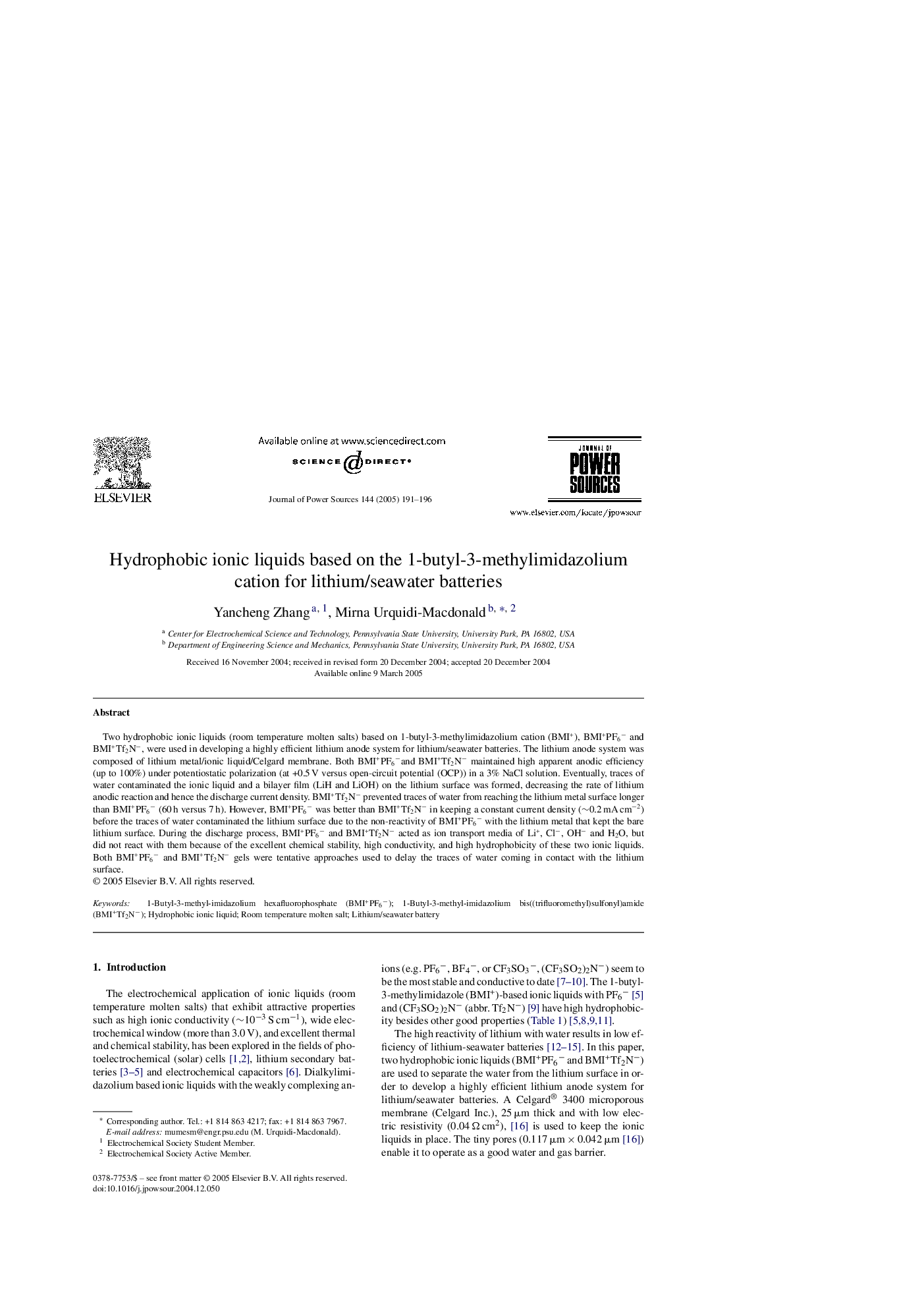| Article ID | Journal | Published Year | Pages | File Type |
|---|---|---|---|---|
| 10567379 | Journal of Power Sources | 2005 | 6 Pages |
Abstract
Two hydrophobic ionic liquids (room temperature molten salts) based on 1-butyl-3-methylimidazolium cation (BMI+), BMI+PF6â and BMI+Tf2Nâ, were used in developing a highly efficient lithium anode system for lithium/seawater batteries. The lithium anode system was composed of lithium metal/ionic liquid/Celgard membrane. Both BMI+PF6âand BMI+Tf2Nâ maintained high apparent anodic efficiency (up to 100%) under potentiostatic polarization (at +0.5Â V versus open-circuit potential (OCP)) in a 3% NaCl solution. Eventually, traces of water contaminated the ionic liquid and a bilayer film (LiH and LiOH) on the lithium surface was formed, decreasing the rate of lithium anodic reaction and hence the discharge current density. BMI+Tf2Nâ prevented traces of water from reaching the lithium metal surface longer than BMI+PF6â (60Â h versus 7Â h). However, BMI+PF6â was better than BMI+Tf2Nâ in keeping a constant current density (â¼0.2Â mAÂ cmâ2) before the traces of water contaminated the lithium surface due to the non-reactivity of BMI+PF6â with the lithium metal that kept the bare lithium surface. During the discharge process, BMI+PF6â and BMI+Tf2Nâ acted as ion transport media of Li+, Clâ, OHâ and H2O, but did not react with them because of the excellent chemical stability, high conductivity, and high hydrophobicity of these two ionic liquids. Both BMI+PF6â and BMI+Tf2Nâ gels were tentative approaches used to delay the traces of water coming in contact with the lithium surface.
Related Topics
Physical Sciences and Engineering
Chemistry
Electrochemistry
Authors
Yancheng Zhang, Mirna Urquidi-Macdonald,
